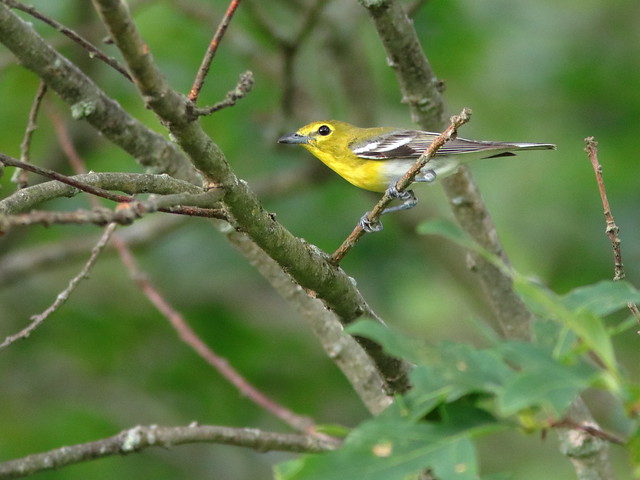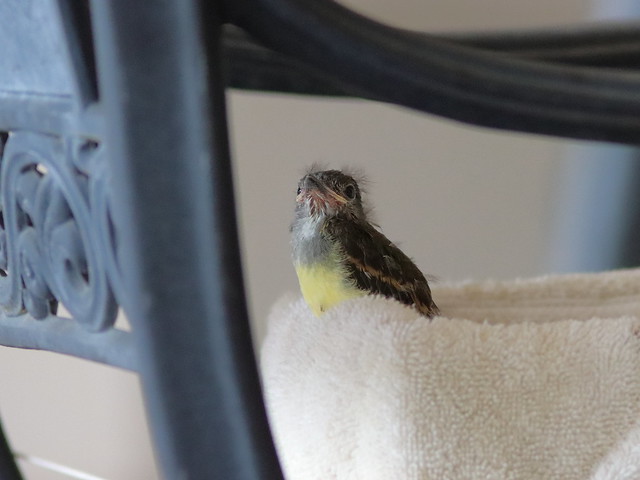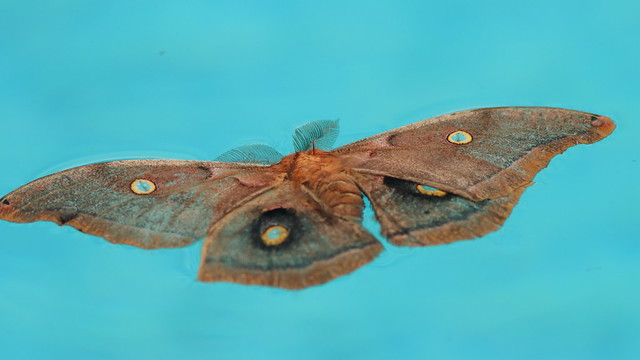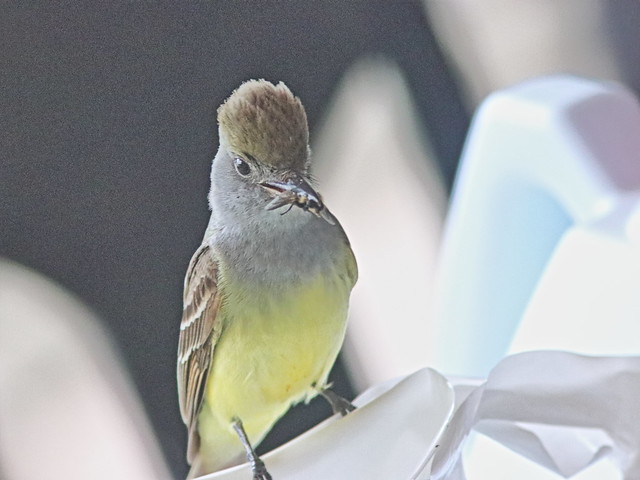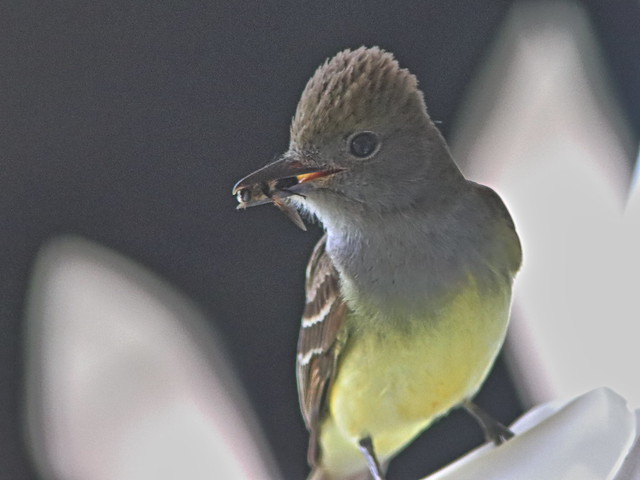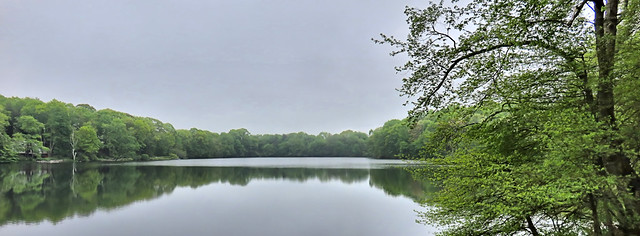This week I added a Veery to the yard bird list, the 76th species. The Veery is a "true thrush," in the same family (Turdidae) as the American Robin and the European Common Blackbird. It was a cloudy gray day and I obtained very poor photos because of the low light. The demure brown bird spent most of the time in heavy foliage, although I thought my exposures through a space in the leaves had a pleasant ethereal quality:
My only bright shot was due to the accidental firing of the in-camera flash:
Moments later a Yellow-throated Vireo came into the same tree and posed on some open branches:
Dissatisfied with my photos of the Veery, I searched my archives for a more suitable portrait. I was surprised to find that my very first photos of these two bird species occurred on August 28, 2012 in Illinois (the day before my 77th birthday-- Oh, to be 70 again!) . They were not very good images, but on that day, within a few minutes, I photographed my first Veery along with my first Yellow-throated Vireo. Quite a coincidence. Here is that Veery:
This week we also have had other colorful resident visitors, including American Goldfinch...
...Prairie Warbler...
...Rose-breasted Grosbeak...
...and Scarlet Tanager:
A male Downy Woodpecker in a gnarly tree stretched his wing:
The three nestling Great Crested Flycatchers who were the subject of my prior blog, "A Flycatcher Adventure" are doing very well. Their eyes opened when they were about 5 days old. On Tuesday night (when about 9 days old) we stopped bringing them inside overnight, as they were well-feathered and the weather was fair. Our covered patio was intended to be their permanent home until they were expected to fly freely at the age of 14-15 days. I tied their cardboard "nest box" to the chair with string to keep it secure from wind bursts.
Their faithful parents continue to feed them regularly:
On their 8th day this one used its wing power to skate across the floor as I was tidying the nest box:
On the evening of the the 9th day, they spent the night outside. Early the next morning (yesterday) we were surprised to find that two of the three had already fledged. The last chick perched on the edge of the "nest," calling out loudly.
The last photo of the last chick on the nest:
One morning I found this motionless Polyphemus Moth floating on the surface of the swimming pool I assumed it was lifeless:
The next day I was surprised to see it still floating there. Our granddaughter Graci retrieved it and found it was still alive:
The clear-cut area in the rear of the property is now flush with weeds, dominated by Sow Thistle, a plant in the aster family which blooms in late summer and produces fluffy seeds. Deer love to eat it, and It is very attractive to the goldfinches, as it provides down (pappus) for their nests and seeds to feed their offspring.
Once again, since I have been rather limited to the back yard, I must dig into my archives to find a photo with a reflection. I selected this one, taken at our local Florida wetlands in the summer of 2021.
It demonstrates anti-crepuscular rays from the sun, which is rising over the ocean behind me on the opposite (eastern) horizon. This effect requires a cloudless sky containing just enough moisture or other particles to reflect the rays, which must first be broken up by storm clouds offshore. Although the rays are parallel, they converge at a vanishing point, which is the shadow of the earth.
This week's header: Singing Veery, Flipped Header 20230625
= = = = = = = = = = = = = = = =
My Corner of the World
________________________________________________
Please visit the links to all these posts to see some excellent photos on display
________________________________________________


